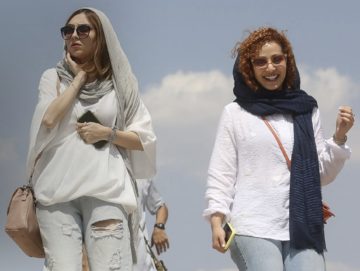Patrick Hassan in Aeon:
 The latest waves of uprisings in Iran following the movement in defence of Iranian women’s freedoms are among the most significant since the Islamic Republic was established after the overthrow of Mohammad Reza Pahlavi in 1979. The regime’s resulting crackdown has led to mass arrests and prison sentences, as well as a string of executions. These uprisings are symptomatic of prolonged and multifaceted discontent with the Islamic Republic’s perceived governance. One of the oft-cited causes is growing dissatisfaction with principles of government grounded in a religious worldview, and its subsequent patterns of civil liberty violations. The most visible of these violations, which has served as a focal point for resistance, is the law of mandatory hijab for women.
The latest waves of uprisings in Iran following the movement in defence of Iranian women’s freedoms are among the most significant since the Islamic Republic was established after the overthrow of Mohammad Reza Pahlavi in 1979. The regime’s resulting crackdown has led to mass arrests and prison sentences, as well as a string of executions. These uprisings are symptomatic of prolonged and multifaceted discontent with the Islamic Republic’s perceived governance. One of the oft-cited causes is growing dissatisfaction with principles of government grounded in a religious worldview, and its subsequent patterns of civil liberty violations. The most visible of these violations, which has served as a focal point for resistance, is the law of mandatory hijab for women.
Gathering reliable empirical data on religious belief in Iran is difficult – apostasy (at least from Islam) is illegal and punishable by death under the vaguely defined crime of Ifsad-e-filarz, or ‘corruption on Earth’. Nevertheless, some available evidence from 2020 suggests predominant opposition to mandatory hijab, to the extent that even some hijabi women have joined the protests to defend everyone’s equal right to liberty. More recent evidence from 2022 also suggests a significant favourable shift towards secularism broadly, with the majority in favour of a separation of religious and civil affairs. Some contemporary research has suggested that, ironically, Iranian theocracy has triggered these trends, which have naturally raised the question of the role of religion in Iranian society.
More here.
